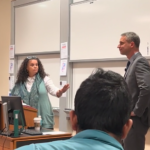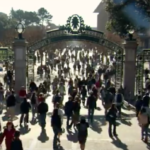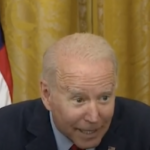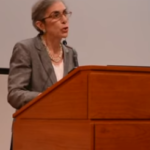Suppressing and Punishing Speech to Fight Racism in Public Schools
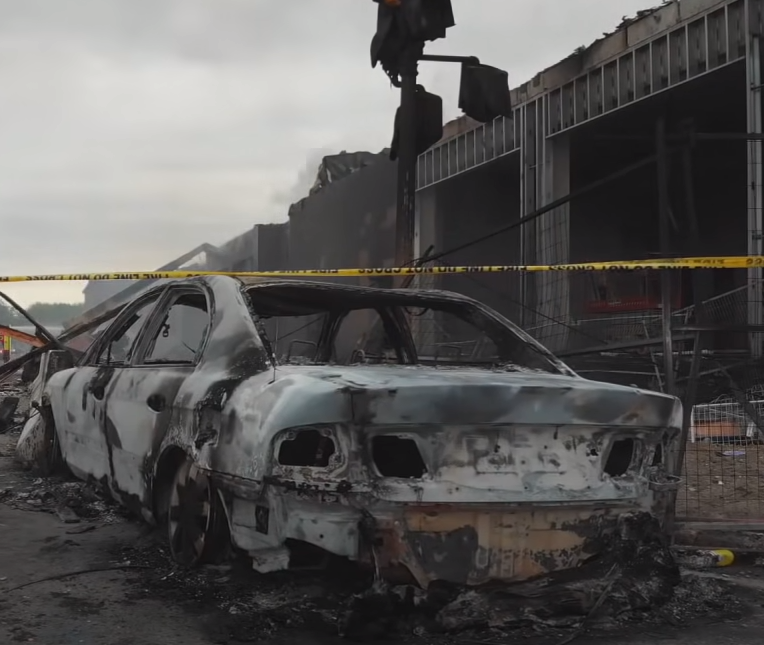
Even before the death of George Floyd under the knee of a Minneapolis police officer, universities had demonstrated that they were in thrall with an obsession about racism and racial equity. Diversocrats in bloated fiefdoms of equity, diversity, and inclusion diligently indoctrinated so-called marginalized students on how to be victims and oppressed, and whole systems were set up to monitor the behavior of potential racists and punish them for their transgressions.
At the University of San Diego’s Law School, for example, members of the Black Law Students Association, in order to confront “the oppression that is inextricably linked to [their] Blackness,” demanded that the law school “develop a classroom diversity officer position tasked with observing classroom practices and reporting questionable conduct within the classroom to the administration” so that perpetrators could be censured and punished.
At Princeton, several hundred faculty members published a letter to the administration in which they asked that the University form “a committee composed entirely of faculty that would oversee the investigation and discipline of racist behaviors, incidents, research, and publication on the part of faculty . . ,” overlooking the fact that what they were calling for was a veritable star chamber in which a handful of virtue-signaling, race-obsessed faculty would use their own bias and subjectivity to vet the research and teaching of fellow faculty and decide which viewpoints would be permitted and which, henceforth, would not (and would potentially even be punished)—a blatant violation of both the spirit and intent of academic freedom.
That same desire to ferret out any racist thought or bias which might injure or make uncomfortable a member of an identity group has seeped into public schools, as well, along with the impulse to censure and punish any staff or students who violate the overly-broad strictures of conversations about race, culture, and politics.
In Chicago, for example, where out of nearly 1,500 shooting victims so far in 2021, over fifty were 15 or younger, at least school-aged children will not be threatened by racism and bias on the part of their school peers now that they can identity and report bigotry in their schools. The formal program, “Transforming Bias-Based Harm,” promotes some of the insidious aspects of now-typical diversity and inclusion campaigns, including finding racism where it is almost imperceptible: implicit or unconscious bias and microaggressions. Students will be able to report the misbehavior of fellow students, including “everyday verbal, nonverbal, and environmental slights, snubs, or insults, whether intentional or unintentional,” directly through the Chicago Public Schools website, and perpetrators are potentially subject to being punished for their unacceptable speech.
Officials in the Wellesley, Massachusetts public school system have proposed a nearly identical program to Chicago’s and have found themselves at odds with parents and other critics alarmed at what they see as further degradation of education because of an obsession with anti-racism and the desire to make everyone tolerant and accepting.
In March, in the wake of a mass shooting at spas in Atlanta during which six Asian women were murdered, the Wellesley school system’s Office of Diversity, Equity, and Inclusion (DE&I) hosted a Zoom session described as a “Healing Space for Asian and Asian American students (grades 6-12), faculty/staff, and others in the BIPOC (Black, Indigenous, People of Color) community who wish to process recent events.” Noticeably absent from the invitation to this race-based “affinity session” were white students. How was that outrageous decision justified by Wellesley officials? “Note,” the invitation read, warning that minority sensitivities had to be respected. “This is a safe space for our Asian/Asian-American and Students of Color, ‘not’ for students who identify only as White.”
Virtue-signaling Wellesley school officials had also decided that it was a good idea to mandate that all schools fly the Black Lives Matter flag to show solidarity with the movement and its goals. Questioning that decision, a group of Wellesley parents wrote an open letter critiquing the flag decision, “not [because of] the concept behind the slogan” but because “the flag and the slogan mirror those of the Black Lives Matter, or BLM, political organization and the associated political movement,” and Wellesley should be neutral on a political issue. More seriously, the parents pointed out, not all of the group’s objectives are positive and the neo-Marxist BLM organization has called for the murder of police officers, violent demonstrations, hatred of white people, and support for the anti-Semitic BDS movement in its campaign to destroy Israel.
Since incidents of blatant, visible racism are extremely rare on either university or high school and elementary school campuses anymore, diversity officials now have sought ways to ferret out examples of racism even where few realize it even exists—including its purported victims. Thus, we have witnessed the creation of what the Chicago officials referred to as “microaggressions,” instances of bigotry and racism that are subtle, unintentional, almost imperceptible to both victim and perpetrator. Nonetheless, for the diversocrats, microaggressions are another form of racism that must be revealed, suppressed, and punished, which is why Wellesley, in its latest racism misstep, has instituted a reporting system so that students, faculty, and staff can anonymously report instances of alleged racism, bigotry, hate speech, and other unwelcomed speech and behavior from members of the community.
As articulated in its policy statement, “Responding to Bias-based Incidents,” a bias incident is “any biased conduct, speech or expression that has an impact but may not involve criminal action, but demonstrates conscious or unconscious bias that targets individuals or groups that are part of a federally protected class (ie. race, ethnicity, national origin, sex, gender identity or expression, sexual orientation, religion, or disability). Bias-based behavior can also be described as when someone treats another person differently or makes an offensive comment because of their membership in a protected group, such as their race, ethnicity, gender, sexual orientation, religion, or disability.” The troubling policy allows students and parents to file complaints, even anonymously, so that transgressors can be identified and punished. “Potential disciplinary actions for students who violate the anti-discrimination policy,” the policy reads, “could include detention, suspension, or,” in language that Cotton Mather might have written, “other restorative responses that require them to acknowledge their responsibility and minimize its impact.”
While observers o this situation may think that identifying and targeting bigotry and microaggressions is an easy task, they may well have overlooked the logistical issues that impact the creation of a speech policy. Who decides what words and which expressions and thoughts are forbidden and in what context they may or may not be used? A committee, school officials, experts from outside the school system, parents, students? Must there be a consensus?
Is only anti-racist speech covered by the policies or are all forms of bigotry and hatred included? Is simply telling jokes subject to punishment? Can an accused defend himself or herself and who decides if punishment should move ahead? Is there an appeal process? The problem with proscribing speech and telling students who may say what to whom, and when, is that there are invariably exceptions and contradictions in both the selection and enforcement of forbidden speech.
If someone utters “All Lives Matter,” for instance, does that constitute a microaggression that diminishes the Black Lives Matter slogan and can be considered racist? If the BLM organization itself is attacked for some of its radical beliefs, as it has many times by faculty and students alike, would that constitute hateful speech or expose the perpetrator to censure or punishment, or both? Would Jewish students, who are now almost universally considered to be white and who are said to enjoy “white privilege,” be able to complain when someone says, “Zionism is racism”? Or “free Palestine”? Or “from the River to Sea, Palestine will be free,” suggesting, of course that there will be no more Israel and Jews will have been expelled or murdered to create a Palestinian state?
Are only “people of color” to be protected and insulated from criticism, censure, or bigotry in the Wellesley and Chicago schools? In the wake of a nation-wide spike in anti-Semitic hate crimes in recent months, and especially after the recent Gaza incursion, will the equity officers offer Jews-only affinity spaces in which Jewish students will be coddled and minority students and other non-Jews will be forbidden from attending because they cannot empathize with Jewish pain and fear?
Clearly, this is a thorny issue with which school officials must deal, and it is precisely because this attack on individuals’ right to express themselves—even poorly or in bad taste—is often threatened by zealous, self-appointed censors that the courts have frequently found themselves examining where rights begin and end. In the case most relevant to this topic, Tinker v. Des Moines, for example, the Court famously found that “It can hardly be argued that either students or teachers shed their constitutional rights to freedom of speech or expression at the schoolhouse gate,” and the right to express oneself, even hatefully, was sacrosanct, providing the speech is not excessively and obviously disruptive to school activities or operations. So even if, in the name of diversity and inclusion, schools implement policies to eliminate any expressions that might threaten racial equanimity, those policies should not and cannot override the individual’s right to speak his or her mind. “In our system,” the Court found, “students may not be regarded as closed-circuit recipients of only that which the State chooses to communicate. They may not be confined to the expression of those sentiments that are officially approved.”
School officials now apparently see themselves as social workers and therapists as well as teachers, and this role they have usurped is dangerous because it is motivated by the leftist ideology embodied in critical race theory and such terms as “white privilege,” notions that, instead of making children less race conscious, work to make them more aware of racial differences and whether they are, by virtue of their skin color, either oppressor or oppressed, victim or victimizer, tolerant and accepting or bigoted and regressive.
And that students can now be singled out, censured, and punished for not conforming to the totalitarian effort to control what children can say about each other is both violative of constitutional rights and morally unacceptable. In 1943, when the Supreme Court addressed the issue of mandatory saluting of the flag in the case of West Virginia State Board of Education v. Barnette, it noted that even when policies are well-intentioned and are designed to create a common good, there is a danger in allowing government or individuals to impose a specific view of the world on others, even with supposed lofty purposes. “Struggles to coerce uniformity of sentiment in support of some end thought essential to their time and country,” the Court noted, “have been waged by many good, as well as by evil, men.”
And, more disturbingly, initial efforts to define what is right and good—such as improved race relations—can eventually lead to a required adherence to one set of beliefs and the suppression of other views. “Those who begin coercive elimination of dissent,” the Court concluded, “soon find themselves exterminating dissenters. Compulsory unification of opinion achieves only the unanimity of the graveyard.”

